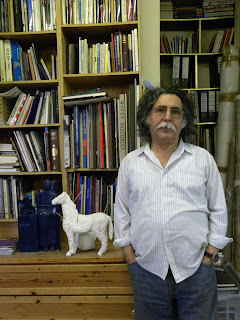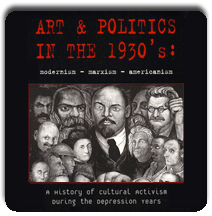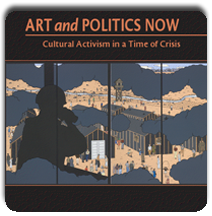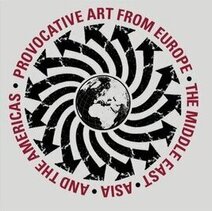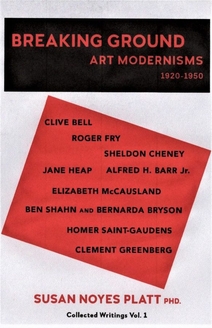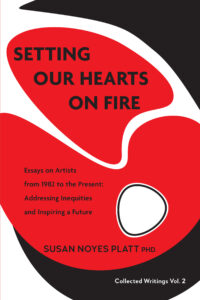Oregon Shakespeare Festival
AMAZING experience. We went to 8 plays in 5 days. They have three theaters running with two shows a day each. The actors were often in two different productions in one day. We went with Georgia McDade, a friend of mine who is a Shakespeare expert, so we got lots of insights. Also, Oregon Shakespeare Festival provides educational material, both printed, in lectures, talks after the performances, back stage tours ( we toured with the actor who played Prince Hal in Henry IV Part I,) musical adaptations (Shakespeare sonnets as hip hop). This was a total immersion.
They included multimedia in several performances, film, animation, text, etc. the lighting was part of the story. When Olivia in Twelfth Night fell in love the red lights suffused the whole Elizabethan stage. In Hamlet, soliloquies had green lights and freeze action. Throne of Blood had film, black outs, brilliant lights.
And aside from the contemporary and recent plays, where you expect it, Shakespeare is all about exactly the way we behave today. Nothing has changed, greed, power, land, love, lust, betrayal, its all there, with the poetic dialogue that we have to read over and over after the play in order to pick up all the nuances.
The plays we saw in order were
Hamlet, with Don Donovan in the leading role, performed in contemporary cocktail clothes and with a hip hop performance in the middle, amazing lighting, and of course, phenomenal acting.
The play within a play in Hamlet ( where he lets his mother and step father know that he knows they killed his father) was performed to music by Outkast, J-Z, LL Kool J, and Tupac. But the lines were all from Shakespeare. What a tour de force.
Hamlet ( Don Donovan) in a suit with pink rose petals floating all around him was the great promotional image. Here is the tee shirt “What a Piece of Work is Man”
So Hamlet, for three hours and more, was riveting as both contemporary and classical. When Claudius, the step father/king, sees the play that accuses him of murder he throws up in a modern black toilet, front stage center. I haven’t ever seen a toilet onstage featured before. ( And of course, OSF has no problem with anachronisms, they love them).
The next day we saw Throne of Blood. This was Macbeth based on Kirosawa’s adaptation in film, based on his relocation of it to ancient Japan and Noh drama with its reductive movements, sounds, and gestures. It was multimedia with a huge floating screen above the stage with stunning graphics and texts. Not to mention the set and the music. Evoking early Japan.
The dialog was an English translation of Kirosawa’s clipped Japanese improvisation of the Macbeth story. So it was avant garde. It was intentionally not smoothly flowing, which I didn’t get at first. I thought it was an awful lot of layers, Scottish king in English play, adapted by Japanese film director, re adapted by Chinese director for American actors.
But visually it was phenomenal.
The last Macbeth that I saw was a feminist interpretation with the witches doubled in number and becoming a covey around Lady Macbeth. In this version, there was a Forest spirit who seemed to be bisexual, and only “Lady Macbeth”, now Lady Asaji played brilliantly by Ako, an actress trained in Japan, who really knew about the Noh theatre that the actions in the play adopted. She bolted the whole play together, as a tiny figure in red in center stage radiating incredible power, apparently backstage as well, in her coaching of the actors on Noh movements
The same day we saw Merchant of Venice which has that famous character, Shylock, the Jewish moneylender in Venice. It was played for the first time in Ashland by a Jewish actor, and it was an opportunity for lots of education of the actors and the audience. He was the undisputed star of the show. “If you prick me, do I not bleed?” He could have been speaking for anyone unjustly persecuted and treated as less than human.

Next day we saw She Loves Me, a fun musical. It felt good to laugh and enjoy good singing. Apparently these Shakespearean actors can also sing.
The stage froze near the last act when the electricity went out in Ashland, just as the lead singer Lisa McCormick had finished a song about vanilla icecream. She sat down on her bed and said to us “want some, I think I am stuck.”
Her bed was supposed to whoosh away.
Twelfth Night is everyone’s favorite play. We saw it earlier this year at the Seattle Shakespeare Company. Amazingly, a lead in She Loves me, played Olivia in Twelfth Night on the same day. Olivia is the rich woman who falls in love with Viola/ Cesario as a boy, one of Shakespeare’s favorite games. Viola is pretending to be a boy after being wrecked at sea and left almost on her own, also falls in love with Orsino, the wealthy prince in love with Olivia. So we had in the original Shakespeare, a boy playing a girl who become a boy, who is still a girl. In this play it was a girl being a boy, not so hard, but actually the love relationships required enormous skill.
And of course, Shakespeare was so far ahead of his time in all this playing with gender identities.
He has wonderful powerful women in all his plays too.
The next day we saw Pride and Prejudice. Beautifully performed and staged, superb acting. And the man who played the wastrel George Wickham became that same evening
Prince Hal in
When this play started out, it was a bit draggy, I thought this is why I never before appreciated the history plays of Shakespeare. Lots of people being slaughtered, narrated by boring characters. But once the Prince Hal scenes began, with the wonderful character Falstaff, carousing among the people with Hal, it was thrilling. An incredible marathon for the actors, including deaf actor Howie Seago, who was incorporated right into the play with signing ( he was also part of Hamlet, as the ghost, but with far fewer lines). The fight scenes were staggering, apparently the sword scenes are rehersed twice right before the show goes on every single time, once at half speed, once at full speed, and Prince Hal matched off with Hotspur, another extraordinary actor, Kevin Kennerly, who also played the lead,Washizu (“Macbeth”) in Throne of Blood.
And then the very next morning we had Prince Hal for a back stage tour at 10am after a double bill the day before.
Final play was American Night, with Culture Clash from LA, again a new media production, with singing and probably 10 costume changes per actor. American history seen in a dream before Juan Jose takes his citizen exam. He meets all the people left out or the perspectives changed, or the events excised, or the people who should have been included or not included. It was a brilliant romp and a telling political statement, going all the way up to the Gulf Oil Spill and the Tea Party, racist anti immigrationists in the present. Here is an interview with Richard Montoya about this play.
Apparently, I picked the right year to start coming to Ashland. Bill Rauch is from the heart of the LA alternative theater scene, and he is bringing in people, ideas, and vibes from that scene. It is really exciting.
So that was our marathon in Ashland.
This entry was posted on August 28, 2010 and is filed under Culture Clash, Hamlet, Oregon Shakespeare Festival, Throne of Blood.
Violence Against Women, Part II
This spring in Philadelphia there was an extraordinary exhibition “Ni Una Mas/ Not One More/The Juarez Murders“. It was held at Drexel University’s new art space the Leonard Pearlstein Gallery. Although I was unable to attend the exhibition, I have received the catalog, and various other reference points, including photos posted on facebook and videos online.
The Juarez Murders have been going on for a long time: since 1993 more than 800 girls and women have been murdered. These killers target young women who are working in maquiladoras (sweat shops) in the “free trade zone”. Mexico has 4000 maquiladors and one million workers. Women are lured to work in them because of the hope of making money for a better life, but in the factory life they exist outside of Mexican social structures. Inside the factory, they are prey to employers who treat them as sex objects. On their way to and from work, they are vulnerable to anyone on the street. Many Mexicans see these zones as places of economic prostitution between Mexican and the US. according to gender theorist Jessica Livingston:
“Global captialism depends on these women to assemble its commodities. While multinational coporations profit from the maquiladors in Juarez, the murdered women and their families bear the cost of global capitalism.”
Diana Washington Valdez is the courageous and intrepid reporter for the El Paso Times who has analyzed why the killers have not been caught. She states that the murders come from different power relationships, gangs who kill as initiation rites, elites who know they can get away with it and kill for pleasure, serial killers and copy cat killings. The police and other authorities are often complicit in the cover-ups or lack of investigation.
Celia Alvarez Munoz’s work is featured on the cover of the catalog Ni Una Mas, it shows a simple pink shift dress, with a razor with cocaine on its edge, at the crotch, blatently referring to the interersection of sex, drugs,workers, and death. These cut offs by Munoz raise the same issues with the red sequined zipper that resembles a flow of blood. These two works are part of a larger installation by the artist Fibra y Furia, Exploitation is in Vogue
The exhibition “Ni Una Mas” included a tribute to Frank Bender, who as a specialist in facial reconstruction used skulls of murder victims in Juarez to reconstruct their faces and help to identify them. He was in great danger as he worked on the faces, even drugged by high officials and threatened.
The exhibition also included well known artists like Kiki Smith, Yoko Ono, Coco Fusco, Nancy Spero, Tim Rollins and KOS. All together there are 19 artists in the catalog.
Some of them made works specific to the exhibition, others contributed work that pertained specifically to the subject, and others were more indirect.
Yoko Ono made a “heal” button, and a poem “Our body is the scar of our mind. We are the oasis of our planet, we can move mountains, heal planet, heal earth, heal us.”
From the photographs, the Art March (see the video linked above) was the high point of the event, taking the message into the streets with a march of hundreds of people wearing pink tea shirts that referred to the pink crosses for the women murdered in Juarez. The exhibition addressed real issues, calling people’s attention to the problem and demanding that solutions be sought.
Of course, the powerful array of forces lined up in Juarez makes it difficult, but at least the gallery made a committment to making a statement and to publicizing the murders. If such an exhibition could take place in galleries all over the country it would really make a difference. Wake up Art World! Down with Narcissism.
This entry was posted on August 26, 2010 and is filed under Diana Washington Valdez, Frank Bender, Ni Una Mas.
Violence Against Women
Lately there have been several different works that call attention to violence against women in our contemporary world. I will mention them in order of my encounter with them
First is of course Stieg Larsson’s The Girl with the Dragon Tattoo,( original title, Men Who Hate Women) and The Girl Who Played with Fire ( I haven’t read the third one yet). These two books describe a lot of violence against women, but there is also the fabulous heroine tough Lisbeth Salander, who has survived unspeakable violence against herself and is on a virtual crusade to punish those who perpetrate the violence. And we cheer her successes even though her methods are also violent because of the violence of her opponents. As a second theme, that relates to violence against women, the books are also a send up of the profession of journalism and the use of mindless sensationalizing smears.
The second forum for addressing violence against women is the play Ruined by Lynn Nottage. I have actually seen it twice, in London and in Seattle in a production by the Intiman Theater. The Seattle production was the original NYC cast and director. The night I went we had the understudy Victoire Charles, who was fantastically good in the lead part which required a huge range of emotions from sassy, sexy, and strong, to terrified and finally, happy (the hardest part to make believable).
Both productions confronted us with the position of women caught in the midst of meaningless war, guerilla conflicts, and their limited choices for survival.
1 be tough, tough, tough.
2 prostitution is preferable to sex slavery and rape
3. children are sacrificed toother people’s violent desires
4 traditional society’s perceptions of the position of women and contemporary war’s utter disregard of respect for women are a terrible mismatch
The women of the cast were fantastically good, different types, different experiences, all of them riveting us with their personal stories. The stories are real, they are based on interviews that the playwright conducted by women from the Congo. The men of the cast seem more types, than individuals, but there were a lot of types within the general theme of guerillas, traders, and commandoes. There was one sensitive man, but each one had a range of strong feelings.
Then there is that other less emphasized theme, that the meaningless war was being waged today in the Congo for the rare minerals that go into all of our electronic gadgets. So as with the BP oil spill we are all implicated.
In partnership with the play Ruined we went to see the movie Call and Response at the Northwest Film Forum, sponsored by Seattle Against Slavery. The film was bascially a documentary about a Concert to End Slavery, organized by Justin Dillon who is interviewed about how he came to do the concert. He includes amazing musicians like Emmanual Jal who survived being a boy soldier, Imogen Heap, Natasha Beddingfeld, and Dillon himself, Talib Kweli, and interviews with Ashley Judd, and the actress Julia Ormond as well as Nicholas Kristoff and others. It also included facts like there have one million people enslaved in the US in the last ten years and only 50 convictions. That there are17,000 people in sex slavery today, it is the single most lucrative enterprise (but Ormond pointed out the continuous flow between guns, war, drugs and slavery).
The magnitude of the problem is staggering. Everything we buy is probably touched by slave labor. This is sex trade that is getting younger and younger, we saw children of six or seven offering sex services. We saw the drug induced prisons for women sold out of villages for tiny debts, but we also heard from people who are trying to help people to get out.
All these media, novels, theater, film, music, addressed the same problems, the same issues. Collectively they are overwhelming. But there are many groups working on doing something, the meaning of the title of the film is here is the call, let us all respond.
This entry was posted on July 28, 2010 and is filed under Call and Response, Justin Dillon, Larsson, Ruined, Seattle Against Slavery.
Art Sparks Occidental Square Summer 2010
My office is on Occidental Square, and so I am familiar with all the regular people who like to spend the day there. They sit on benches pursuing various activities. They are guarded by the wonderful 1970s totems by indigenous carver Duane Pasco one of which you see in this photograph. 

So I was surprised one day to suddenly see a red carpet rolled out and a women in ornate Victorian dress standing there. 

It was Art Sparks, a program sponsored by 4 Culture
(whom I just highlighted in the previous entry). They have commissioned artists to come to Occidental Square all summer and spark it, that means, bring art to the parks that interacts with the public, and creates a more friendly setting for passersby.
The red carpet and the woman in Victorian dress, I learned, were part of that project.
She was reading War and Peace in her period costume, as she walked up and down the carpet, and we were invited to accompany her for a round trip as she read. So I did. Twice. It was fun. The first time I was asked to hold her parasol, as she read a passage from early in the book, before the war takes hold. The second time, we were out on the battlefield dealing with problems.
I asked her about the project and she said she liked to take on challenges, like a very long book that we have difficulty reading these days.
She was there a whole week, every day, reading, sometimes alone, sometimes with other people keeping her company.
I went from dubious to enthusastic. I love books. Her perseverence and good humor won me over. I found her reading on a break in the Grand Central Building and she was really into the book. I asked her for my friend John at the Globe Bookstore which edition she was reading, and it was the latest. (The Globe Bookstore doesn’t have a website. Go and discover for yourself on First and Main, now that Elliott Books is gone, it is a treasure that is to be relished all the more!)
So it was a great project.
Tony had brought his hobby to the park. It was a flight simulator. He said it was what pilots do to learn how to fly. He had a lot of equipment and he enjoyed showing me how it worked. But of course he wasn’t part of Art Sparks. He was just there because it was a sunny day.
hanging in the trees. It is adding to the tree canopy. It is called Celebration and Fanfare. It is made of a “paper like plastic fiber” and hangs over our heads as we pass under it. It is delicate and casts shadows like the trees. I’ll let you decide what you think. It probably appeals to a lot of people who like their art attractive.
Another group called City Meditation Crew, from NYC I think, made a meditation circle with reflective gum wrappers. They were wearing white costumes with big white hats. They definately stood out from the rest of us mortals. They created events including a walking mediation that called attention to daily living. (I couldn’t stay for their events, but I thought about them as I passed by with my daily living) There was also a Butoh performance that I didn’t see. There are other events coming up, listed on the website
There have been some other art events in the city outside the box. One important performance was by Garric Simonsen. This cart was part of his performance in which he wheeled a cart full of delectable inflatable toys and stuffed animals through the city from the James Washington Foundation which sponsored him as part of a residency. He walked from the Washington Foundation in the Central District, down Capitol Hill, and all the way to Occidental Square. He gave away all the toys on the cart and on the way he had a lot of great conversations with the public and a lot of fun. Simonsen and all the artists in residence at the Washington House are inspired by the spirit of James Washington. They respond to this famous sculptor’s home and legacy in many different ways as they work in his studio. Simonsen responded to Washington’s big commitment to children, community, and public engagement. He transformed that into his own exploration of issues that artists face about how to interact with the commercial systems of art (which he was obviously subverting here in a number of ways.) Washington was really brilliant at promoting himself by the way.
So how does one evaluate these type of art expressions? By whether some members of the public respond, then they all worked, by whether the public space is enlivened, that also happened. But still I am struck by the fact that Mimi was so much more really there than some of the other projects sponsored by Art Sparks, even though she had a red carpet and a Victorian dress. We could all walk with her.
I also really like the artists like Tony and Garric who just do their own thing out there.
And don’t forget all those permanent residents many of whom are pretty interesting in their own right. I introduced my one year old granddaughter to my personal friends among the permanent people the other day and they were all delighted to meet her.
Here she is with me camping at Mt Rainier. I didn’t catch the downtown greetings on camera.
This entry was posted on July 23, 2010 and is filed under 4Culture, Art Sparks, Garric Simonsen, James Washington Foundation, Mimi Allen.
Detained
Here in the Northwest we still have a lot of support for art from the public sphere, King County 4Culture, the City of Seattle Mayor’s Office of Art and Cultural Affairs, the Washington State Arts Commission. There are also many local non profits that support both visual art and the literary arts, theater, dance, opera, music and much more. Then we have street festivals, farmers markets, and impromptu creativity. We are lucky here.
But from my own perspective, I was really excited about an exhibition that is taking place at 4Culture gallery this summer, because the public support does not often, for obvious reasons, translate into support for politically engaged art. Sometimes there are subtle and indirect environmental references, and there has been a lot of support for artists working in the environment, but hard politics is a hard sell.
Eroyn Franklin managed to break through that with her amazing series “Detained.”
Her drawings fill the walls of 4 culture with the stories of two immigrants going through detention centers in Washington State, the Northwest Detention Center in Tacoma, and its predecessor in Seattle, the U.S. immigration and detention facility. It includes crucial, specific details, it makes the vague information that we have about detainees visible.
She tells two stories. One man from Cambodia, Many Uch, who came here as a child, was placed in detention as an adult because he drove a getaway car in an armed robbery when he was 18, a crime for which he had already served a sentence. A woman, Gabriella Cubillos, was detained because she was pulled over for expired tabs, detained for unpaid parking tickets: she had entered the country illegally many years ago, when it was common and easy in the 1990s.
Eroyn had some important facts that don’t appear in the drawings with their thought balloons about conversations among inmates in the centers or elsewhere ( above in a mosque after Mani was released)
2/3 of deportees are removed for immigration violations alone
90 percent have no legal representation, no timely hearings
80 percent of those detained are deported- they say they want to be deported in order to get out of detention
Immigrant law is different from criminal law
All immigration decisions are part of the Executive branch, there is no legislative involvement
The growth in this industry is huge: the old INS in Seattle had 200 beds, ICE in Tacoma had 1000 when it opened, and it has 1545 now. There is a lot of money available for this since 9/11. In 2008 there was a 35 percent increase in deportations to more than 10,000 people ! This is horrendous. Detentions are random ( often combed from prison populations), there is virtually no legal recourse, and many of the people deported have made their homes in the US for many years and have children here.
The injustice of the situation is blatent.
What has happened to this country, formerly so welcoming to immigrants and enriched by them.
Of the 16 detention centers in the US, 7 are run by private contractor GEO,
they make $150 on every person in the center. It is seen as an “investment opportunity” and a “growth industry” Another facility is projected for Yakima.
I would like to add from the Bill of Rights Defense Committee site that the Bureau of Immigration and Customs Enforcement ( ICE) spends 1.7 billion a year to detain 380,000 people
How did Franklin pull off having he”Detained” shown at 4Culture?
Well she is a photography graduate of Paul Berger and the University of Washington. That is a very helpful credential in this city.
Also, she was working with a journalism group who have done special reporting on this issue called The Common Language Project. They have done a four part series called Between Worlds/Behind Bars on “Seattle’s Ellis Island” on the Northwest Detention Center in downtown Tacoma. So she had content that resonates, a crucial factor. She is engaged with her subject.
Finally, the work is difficult to read, as you can see from the image above. The fifty foot long drawings require serious effort for a gallery goer accustomed to sweep through a show at a glance. That makes it less obviously threatening to people who don’t bother to read it. The writing is small for a gallery, it will be much easier when the book comes out. Here is the newspaper image.
PS. The old Seattle INS facility has just been sold online to investors who will work with the International District residents to address itthe history of immigration in Seattle which goes back to the detention of the Chinese in the late 19th century.
Shirin Neshat Women without Men
I just saw Shirin Neshat’s first feature length film, Women without Men, 2009. It has won a lot of awards, at the Sundance Film Festival, at the Venice Biennale, and elsewhere.
I wonder how many of the people giving awards and writing reviews have read the novel by Shahrnush Parsipur of the same title. This is the second novel by Shahrnush Parsipur that Neshat has used as a point of departure, the first was Touba and the Meaning of Night.
Parsipur seems to be supportive of the film, she is appearing in the photographs of the Silver Lion ceremony in Venice and she even plays a part in the film as the brothel madam.
The film is visually dazzling, Neshat’s trademark, and her film is a logical direction from her early photographs, then the slow moving imagery of her installations, to now a feature- length film. Her husband Shoja Azari is also a filmmaker and collaborates with her. The film was shot in Morocco, with Casablanca as 1950s Tehran. This is a good review.
Women of Allah, her famous photography series in which she wrote the poetry of the famous modernist Iranian feminist poet, Forough Farokhzad, on the hands and face of (herself) wearing a chador, was a response to a visit to Iran after many years. She was shocked at the changes from what she remembered in the late 1970s as a small child ( she left in 1979 at the time of the Islamic Revolution). Paying homage to a great poet as a visual artist is common in art from Iran, Iraq, Egypt, and other countries in which poetry has been more important than visual art. (I would like to avoid the inaccurate term “Middle East”)
Her film Women without Men appeared almost at the same time as the Green Revolution, an amazingly fortuitous circumstance for its success. The cast and Neshat wore green and held up the peace symbol in Venice during the award ceremony in September 2009 for Best Director.
The film is pure Shirin Neshat. She has stunning images of women in black chadors (she has a love hate relationship with chadors, she loves their visual effects, but not the oppression of wearing them.) A lot of her films include an emphasis on the black shapes of the chador.
I have heard Shirin Neshat speak, and she is very compelling. I can still remember her saying on a panel in Istanbul, ” artists in Iran do not have the luxury to ignore politics.”
On that note, the film’s vortex is the politics surrounding the US coup of 1953 which overthrew a democratically elected government in Iran and reinstalled the Shah.
One of her characters, Munis, comes back from death and engages with the political activists who support Mohammed Mossadegh. They are represented as Communists, leafleting in the dark of night, resisting the supporters of the Shah in demonstrations in the streets.They are ultimately crushed both literally and metaphorically. That’s Munis in the photograph above, floating in a sea of people, both there and not there ( she is after all resurrected from the dead.)
None of this is in the novel.
The sole reference to the coup in the novel is the date of the novel mentioned in the book, August 1953. There is unexplained turmoil in the streets. Munis is not a political activist, she simply visits a bookstore and reads some books.
Parsipur is a feminist novelist, she has been writing books and short stories since the late 1960s. Women Without Men was first drafted in the late 1970s, although published in the late 1980s. She was censored for referring to virginity and has spent time in jail. Her life has been both as an acclaimed Iranian novelist and as an exile since 1994 whose works are banned in Iran, an incredible tension. All of her novels include elements of the magical, the incredible, magic trees, magic women, women as trees, ( if you saw Touba by Neshat, the woman became the magical tree, in her novel Women without Men, a woman plants herself and becomes a tree).
But the main theme of Women without Men, the novel, is women together in a special place. In that place, a house with an orchard, magical events occur. The novel is feminist, focusing on four women from different social classes, a prostitute, a sister of a repressive and religious brother, a religiously observant woman in love with that brother, and a wealthy woman who leaves her general husband and buys a garden and estate in the country in order to be free and do as she wishes, including writing poetry, which she does badly. ( In the film she is a singer).
The main theme of Women without Men the film, is the coup d’etat, the role of the United States, and people’s lives at that time. Neshat brings together the military, the Shah reinstatement, and the magical orchard where the women live by having the military who are searching for communists after the Coup come to a party at the house in the orchard.
The parties in the book are not connected to the military, they are a celebration of life and the aspirations of Fakhri to be famous. In the film, she is attached like a mother to the prostitute Zarin who hovers between life and death; in the book, Zarin marries the gardner and has a magical pregnancy ( becoming transparent), giving birth to a lily which is planted by the stream. Her mothers milk is given to the woman tree.
The place of music is crucial to the film. As the soldiers and officers sit at the table disrupting the party of the bourgeois guests who both support and do not support the coup, the tension is broken by the beautiful singing and playing of an elderly man. (earlier, before the soldiers arrived, the hostess Fakhri had performed herself).
So the question is what is the position of culture here? I found it provocative, on the one hand it was soothing the oppressive military men, on the other hand it was disrupting their oppression.
The other question is, why did Neshat keep the same title as the novel for her book. Her film is about the tension between life and politics, between freedom and oppression, the novel is about complex relationships between women, between reality and fantasy. They are entirely different. In the book all four women are in the same place. Munis does not go back to Tehran.
But one cannot argue with Neshat’s power to call attention to political issues in an aesthetic context. This is the most difficult achievement for art. I salute her for that. But for those who are looking for an Iranian film, they will have to look elsewhere. She has said she wants to convey the complexity of Islamic culture, but contemporary Iranian women say that she has been away too long ( she is also banned from Iran now). Iranian women that I know do not like her work. They find it annoyingly cliched and superficial with respect to Iranian society and Iranian women.They refer to her art as “chador” art, or “veil” art, holding the Western gaze to Eastern art.
I suggest Bidoun magazine, an outrageously amusing and clever contemporary publication on culture in the Middle East (they call it that) and Arteeast, an online journal that has indepth articles on a range of subjects.
Nonetheless, Neshat is the primary female Western-based artist who is so prominently addressing Iranian politics in art for the international art audience. At least she is opening the door. The fact that we think all those chadors are what is happening in Iran then or now just shows how much we all have to learn.
This entry was posted on July 14, 2010 and is filed under Shahrnush Parsipur, Shirin Neshat, Woman without Men.




















































